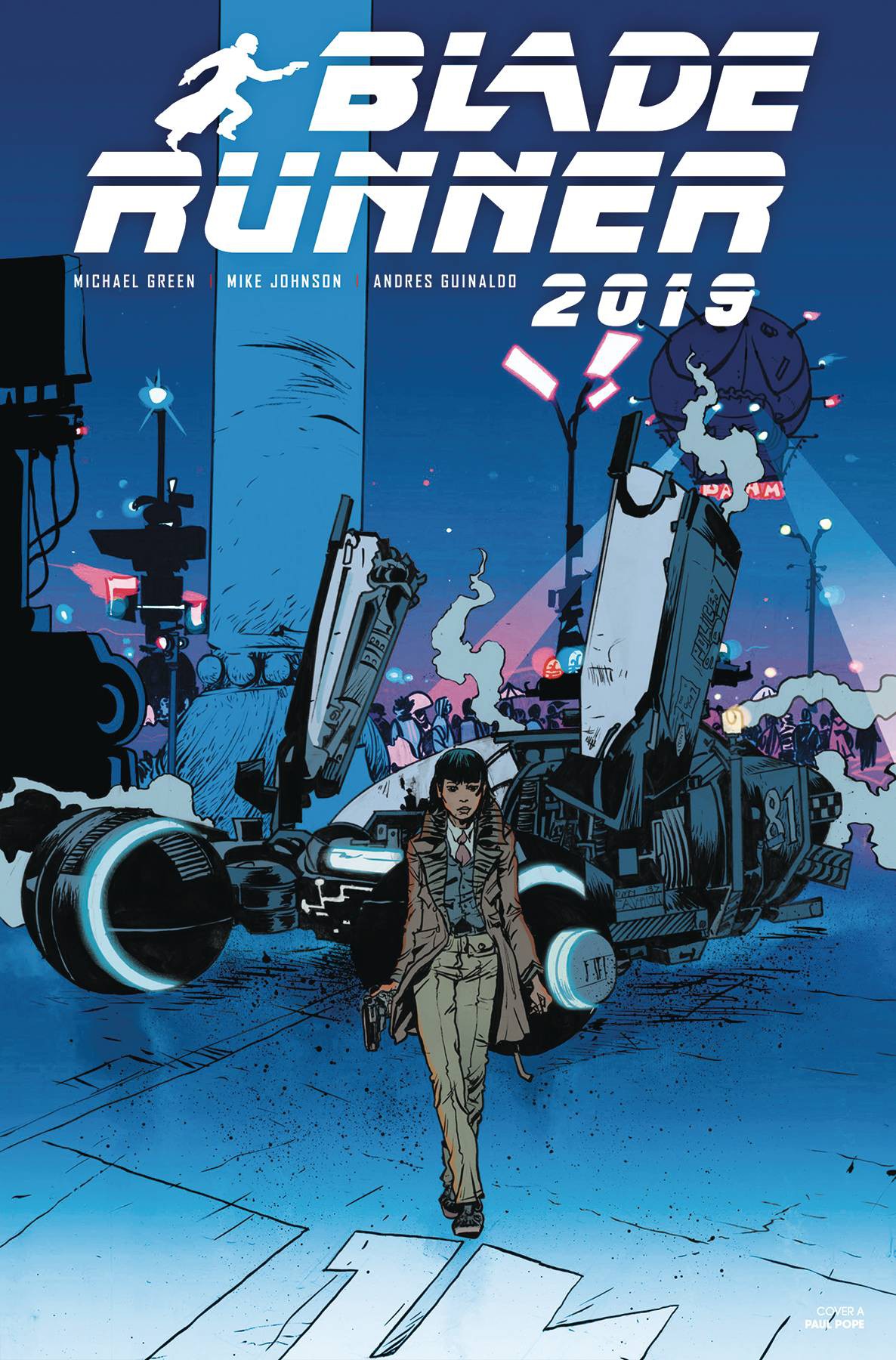

Scott worked closely with artist Syd Mead to translate these references into the unique, urban landscape of Blade Runner. Also, "one early and key Blade Runner visual reference was artist Edward Hopper's hauntingly lonely painting 'Nighthawks.' This famous work depicts a group of nocturnal urban dwellers frozen in silent meditation under the stark florescent light of a sparsely populated all-night diner" (Sammon 74). In terms of Blade Runner's (now iconic) look and design, Ridley Scott was inspired by Heavy Metal comic books. Scott flew to London to watch scenes from Raiders and realized that he had finally found his Rick Deckard. Meanwhile, Steven Spielberg was in the middle of post-production on Raiders of the Lost Ark, and told Ridley Scott that Harrison Ford was about to become a huge star.

Eventually, Scott and Fancher realized that they had gotten too far away from the ideas that they had originally liked, and Hoffman stepped down. Scott and Hoffman spent hours together, and Hoffman made it clear that he saw Blade Runner as more of a social statement than a film noir. As for casting, Dustin Hoffman was originally attached to play Rick Deckard. Hampton was getting exhausted, so Deeley and Scott hired writer David Peoples to give the script a harder edge. Deeley admits that he conceded many more rights to Tandem than he was comfortable with - but he had no choice because they were two weeks away from having to halt pre-production and risk Blade Runner being dead in the water before shooting a single frame.Īs Deeley was desperately trying to put the financing back together, Ridley Scott became more and more obsessive about Fancher's rewrites - and soon, the cast started to weigh in as well. They agreed to put up the completion money (whatever it took to finish the film) in exchange for all television and home video rights, the theatrical surplus, and a deferred $1.5 million fee. Tandem's principals, Bud Yorkin and Jerry Perenchio, had primarily financed television, but they liked the idea of cloning and the film noir style that Ridley Scott was developing. Finally, Deeley approached Tandem Productions. The foreign theatrical rights went to Hong Kong film mogul Run Run Shaw for another $8.5 million. put up $8.5 million for the North American theatrical rights to Blade Runner. Ladd was now running his own company, through which Warner Bros. Alan Ladd Jr., who had distributed Alien while he was the President of 20th Century Fox, read Fancher's script and loved it. Snyder, the Art Director, remembers having "dog and pony shows for all the distributors". Pre-production went on as planned, however, and David L. There was no way Filmways was going to be able to support Ridley Scott's vision - and they pulled out, even though sets were already being constructed. By the time Scott signed on, Filmways had already spent $2.5 million on the film but got nervous when they saw the scope of the project expanding. Originally, a small production company called Filmways was going to finance Blade Runner and, based on Fancher's original screenplay, had budgeted about $12.5 million total for the whole film. They licensed the title from Borroughs' representatives and Dangerous Days became Blade Runner.

Blade runner screenwriter movie#
Borroughs called Blade Runner: A Movie and fell in love with the term as a description of Deckard's job chasing androids. Scott also felt that calling Deckard a "detective" was lazy and uncreative, so Fancher found a slim volume by beat writer William S.
Blade runner screenwriter windows#
Mainly, Scott wanted to know what was outside the windows in the futuristic drama.

He worked with Fancher extensively to revise the screenplay. Ridley Scott decided to switch gears and signed on to Dangerous Days. However, that film was taking longer than anticipated and, a few years into development, Scott's older brother, Frank, died of cancer. He was drawn to the question that the book presented: what makes us human? When first approached, Ridley Scott, Deeley and Fancher's first choice to direct Dangerous Days, turned the project down because he was already working on Dune. Producer Michael Deeley liked the throughline of Dick's book - the idea of a bureaucratic detective chasing androids. It is considered one of the most groundbreaking science fiction films of all time. The film stars Harrison Ford, Rutger Hauer, Sean Young, and Daryl Hannah. Hampton Fancher and David Peoples wrote the screenplay. Dick's science fiction novel Do Androids Dream of Electric Sheep, directed by Ridley Scott and produced by Michael Deeley. Blade Runner is the 1981 film adaptation of Philip K.


 0 kommentar(er)
0 kommentar(er)
